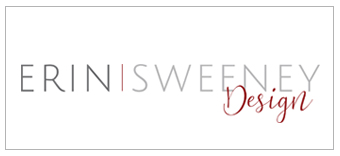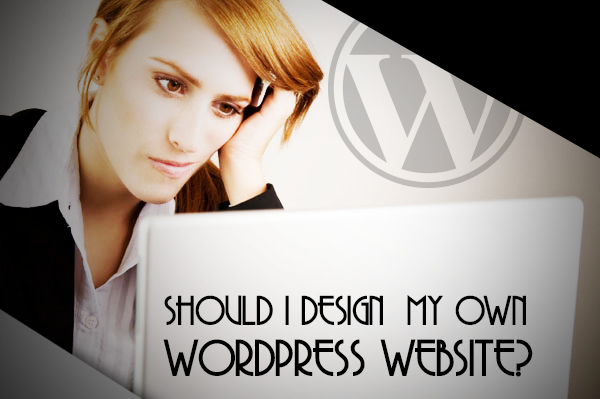The popularity of WordPress has grown over recent years. WordPress powers close to 25% of all websites on the internet today. And it’s not just for small business. Companies such as The New Yorker, eBay Inc., Sony, Fortune, Time, and Variety are all on a WordPress platform. There are many reasons why businesses both large and small choose to take advantage of this CMS platform. Here are a few:
- Ease of use and a high-level of flexibility.
- WordPress is free and can be used to create any type of website.
- As an open source software, WordPress opens users up to an entire network of free support.
- Many free WordPress plugins exist that add functionality to a website.
- WordPress is considered search-engine friendly.
- WordPress can handle all sorts of media, including images, audio, and video.
“Sounds great! I want a WordPress website for my business.”
With all the talk of it being easy to work in WordPress, some business owners looking to make the switch to WordPress are tempted to try and build a website for their business themselves. However, if they are not a trained designer, they soon learn it is not quite as easy as it originally appeared. While YouTube is inundated with “Build Your Own WordPress Website!” tutorials, the learning curve to understanding the basics of WordPress is said to take about 60 hours. That’s a heck of alot of time. Not to mention, that only gives you the basics. There are many nuances to WordPress that only someone trained in the program will know. In addition, a website design is so much more than just the mechanics. Website owners need to be concerned about the look and feel of their website, the user-friendliness of their theme, the content that they are putting up, images that are being uploaded and positioned on the pages, as well as a variety of additional functions such as call to action buttons, light boxes, properly naming and sizing images to use online, etc. While there are many website builders out there promising anyone can build a website, that’s just not true (See The Top 6 Reasons to Say No to Wix). But why? Why can’t everybody design their own website? Well, can everybody repave their driveway? Can everybody run wiring to their outdoor light? Can everybody repair a car engine? Of course not. When we need things done right, we hire a professional. This practice holds true for a business website.
“Why should I hire someone? I hear WordPress is easy to learn.”
Before you delve in to building your own website, ask yourself this, “What is the most constructive use of my time?” Like most small business owners, you probably have the demands of running a business to contend with every day, leaving you little free time to expertly learn about WordPress website design, content strategy, optimization, marketing, social media strategies, and graphic design. Even if you have all the time in the world, here are two key reasons you should hire a professional to design your website:
- A professional has been expertly trained for the task which requires a genuine level of expertise to do well. WordPress might initially appear easy to use, but that’s just the basics of the platform. For a high-quality and professional look and good functionality, you need to hire an expert.
- Hiring someone to focus on the building of your website allows you more time to focus your efforts on helping your designer(s) plan and manage the project. It’s very difficult to be the designer, the developer, the writer, and the manager on a website project, while also staying on top of the demands of your own business.
“I understand. I need to hire someone. I will. But first, what should I be doing on my end to get ready to discuss a website project with a designer?”
Many times a new client will approach me with no idea how to go from the initial thoughts of wanting to have a web presence, to actually seeing their website up and running. So, let’s start with some initial steps:
Step One
Figure out the type of website that you want for your business. Are you looking for an online brochure of your business, or do you need your website to perform functions such as offer a customer portal, or sell a product? Do some research by looking at competitor websites and determine things that you like and things that you don’t like before contacting a designer.
Step Two
Do you already have a professionally-designed logo? If not, consider hiring a graphic designer to design one for you, as well as develop your branding. A logo and branding will be needed when it comes to designing the look and feel of your website. Plus, it’s a good idea to have a consistent look and feel to your business as you market your products and services both online and in printed materials.
Step Three
Figure out the types of pages you would like on your website ahead of time. Most websites include some staple pages, such as an About page, a Contact page, and a Testimonials page. Determine other pages that you’ll need by reviewing the websites of your competitors and seeing what it is that they are doing successfully.
Step Four
Begin developing some content for the website. You’ll want to have your content as final as possible before sending it to your designer. Content is VERY important. Some business owners choose to write their own content, but I highly recommend hiring a professional writer to create your website content for you. A professional writer will not only create content that flows easily, they know how to write content that will help drive traffic to your website.
Step Five
Set up business pages on some social networks ahead of time. You’ll want to begin growing your audience as easy as possible. That way, once the website is launched, you’ll already have a network of individuals to start promoting it to. Just because you have a live website does NOT mean people will find you. But having some followers in place is a good starting point to getting the initial word out.
Step Six
Get your domain name registered and your hosting set up. If you are confused about how to choose a domain name, check out 10 Steps to the Perfect Domain Name. In regards to hosting, many companies offer different plans. The longer you sign up for the plan, the less expensive it will be. Contact the hosting company directly and speak with a customer service representative if you have any questions.
Once your hosting is set up, you’ve gotten some content started, you’re on a few social platforms and have begun collecting a following, and your branding is in place, your designer will be able to begin building your website.
“Yay! I’ll have a website up! Then what?”
Owning a website is like owning a car. To keep it running smoothly, it needs regular maintenance. Be sure to discuss a maintenance plan with your designer. In addition to regular maintenance, keep your site active and engaging with a blog. Updating website content and keeping the site up to date with plugin updates and staying current with website trends are great ways to grow your website and increase your traffic. Plus, make sure you are running analytics on your website. Knowing how traffic is accessing and engaging with your website is important. Analytics will help you manage your website growth and optimization. You may also find it beneficial for your business to invest in some search engine optimization strategies that help increase search rankings.
“Sounds great. But, I’m on a budget. What might all this cost me?”
There are no standard rates for WordPress website designers. It all depends on your designer and the services they provide, their experience, and their reputation. But, here are rough ideas of hourly rates related to design experience:
- Freelancer with a good amount of experience = $50-75/hour
- Very experienced freelancer = $75-100/hour
- In-demand freelancer = $125-175/hr
- Specialist = $175-$400/HR
Pricing out a specific job is tricky. Many factors come into play, such as functionalities needed, how prepared the client is with content and images, how much custom design work is required, etc. Some starting points for both brochure sites and e-commerce sites:
Brochure Website Costs
You can expect to pay upwards of $2,000 for a basic brochure site in WordPress depending on the size of the website and what is needed. The more custom work a designer has to do, the more expensive the project will become. Expect additional costs for custom designed graphics, plugin installations and setups, complex custom forms, etc.
E-commerce Website Costs
For an online storefront, expect to pay $3,500 or more depending on the site and complexity of the website. Additional costs include setting up complex payment gateways and creating custom designed graphics if not supplied by client for products.
Takeaway: The more complex and custom the website needs to be, the higher the price tag.
“So, the old adage holds true: you get what you pay for!”
Overall, for most small business owners, your basic start up costs will run about $2000-$5000. What’s important here is your return on investment (ROI). Your website is necessary to bring in leads. You want it to become a profit center. That being the case, a professionally-designed website is well worth the investment. If you don’t know what you are doing, you can end up losing potential customers, and therefore limiting the growth of your business. Your website is an essential part of your business. Put it in the hands of a professional. You won’t regret it.



